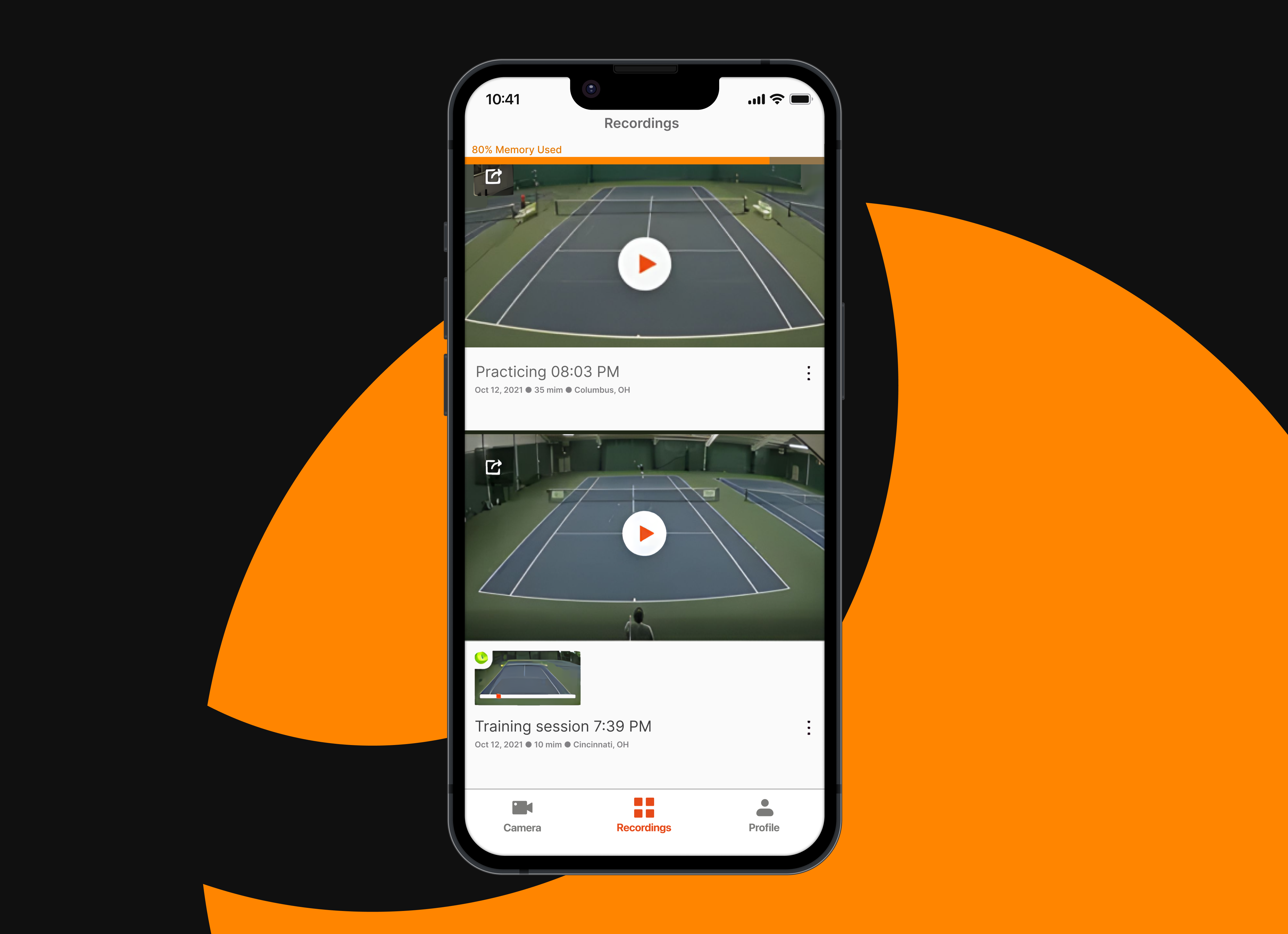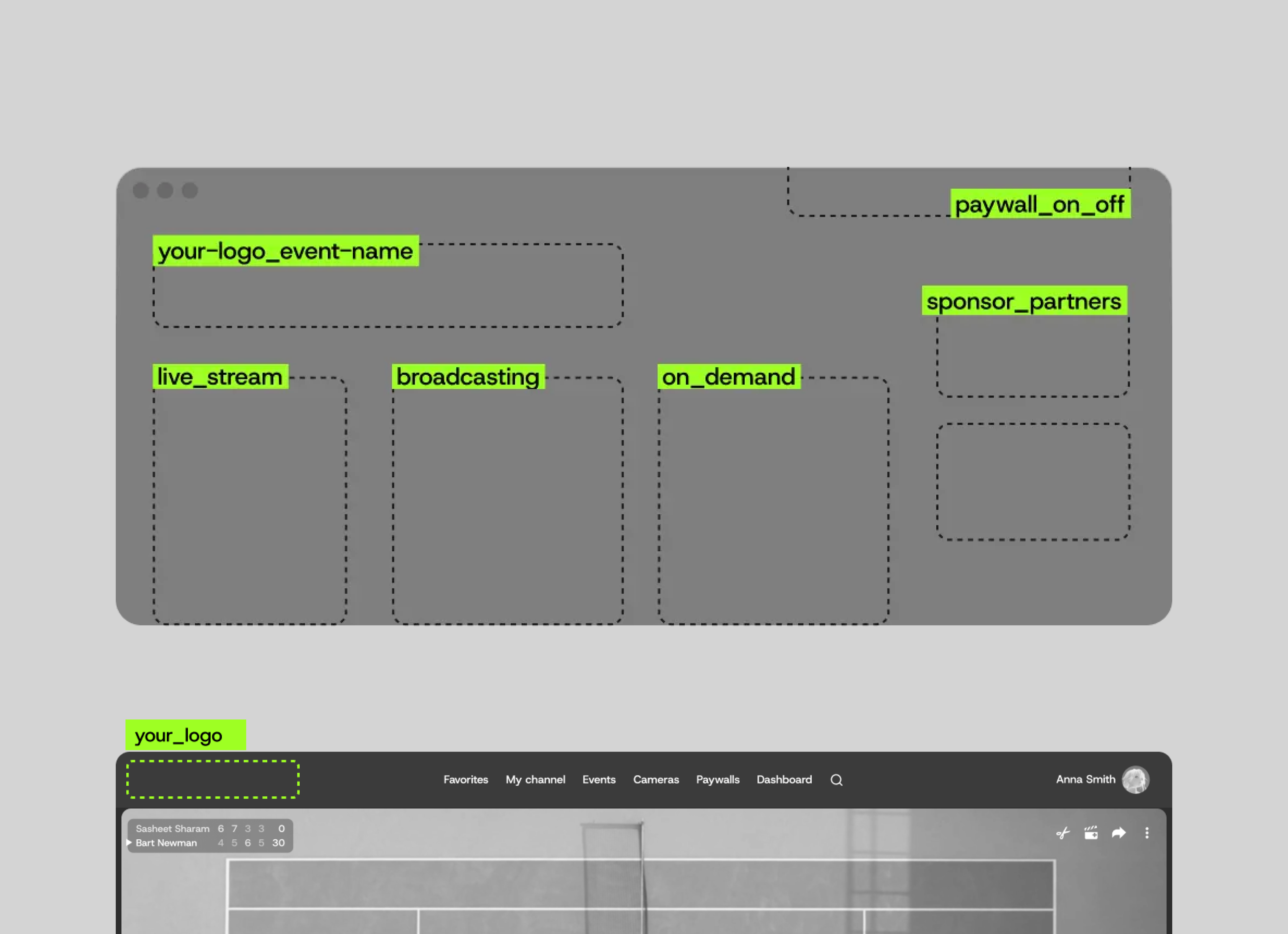Design-driven strategy to expand brand, product, and market reach across racket sports.
View LiveTrack.Tennis began as a startup focused on every kind of tennis player from competitive athletes to beginners. When I joined, I led a strategic and design-led pivot to clarify the target market, streamline the experience, and expand the product’s potential beyond tennis to include other fast-growing racket sports like padel and pickleball.
.png)
As a college tennis player, coach at the Rafa Nadal Academy, and tennis New Zealand representative, I was able to bring a wealth of knowledge and connections to the brand and project.
Timeline: Feb 2021—Jan 2022
.png)
.png)
Before I joined, Track.Tennis required players to scan QR codes, configure cameras, and rely on facility staff just to start recording. As a tennis coach at the time, I saw firsthand how frustrating this was for both players and staff. I also realized that the real opportunity wasn’t in serving everyone, but in focusing on the competitive layer of the sport: where performance, accuracy, and usability truly mattered. That clarity guided a complete product and business model shift.
Track.Tennis originally tried to cater to everyone: juniors, casual players, club leagues, and competitors alike. The result was a diluted message and a complex experience that didn’t serve any group exceptionally well, especially in a competitive market with SwingVision taking over the consumer space. The product needed focus, clarity, and purpose.
Fragmented Focus

Trying to serve all player types left the product without a clear audience or message.
Complex Setup

Players had to scan QR codes, configure settings, and rely on staff to initiate recordings.
Mobile Fatigue

Videos stored in-app took up significant phone space and slowed performance.
Visual Disconnect

An orange-tinted visual identity clashed with player psychology and brand perception.
I spoke directly with dozens of players, coaches, and facilities, leveraging my background in competitive tennis to find what truly mattered to players, coaches and facilities. These conversations helped map the core personas that truly needed Track.Tennis and revealed how we could deliver value to each group.
Needed full control and access to their match and practice data to improve performance.
Key Jobs To Be Done
Record matches and practices automatically, without manual setup.
Upload personal recordings when facility setup isn’t available.
Store, annotate, and review performance history over time.
Share recordings and insights collaboratively with coaches.
Discover and book Track.Tennis-enabled courts easily.
Focused on college recruitment and measurable improvement.
Key Jobs To Be Done
Record and store analyzed match videos for scholarship or recruiting purposes.
Receive actionable performance insights.
Find nearby Track.Tennis facilities and book courts seamlessly.
Build a shareable library of match content to showcase to college coaches.
Used the service casually, often driven by curiosity or passion for improvement.
Key Jobs To Be Done
Record occasional matches or lessons for personal review.
Get lightweight insights without complex analysis.
Share fun or interesting moments with coaches or friends.
Needed efficiency, monetization, and reduced technical overhead.
Key Jobs To Be Done
Offer recording as a paid court add-on with minimal staff involvement.
Customize their experience of the app with personal branding.
Manage systems for multiple sports under one platform.
Increase revenue by offering added-value technology to players.
Required access to reliable footage for player development and scouting.
Key Jobs To Be Done
Review practice and match recordings remotely.
Annotate, comment, and collaborate with players asynchronously.
Store and organize team footage efficiently for analysis and recruitment.
Customize their experience of the app with college branding.
Sought scalability and professionalism in match streaming.
Key Jobs To Be Done
Enable live streaming with consistent quality across courts.
Archive tournament footage and deliver to players post-event.
Prepare for future line-calling and fairness features.
We analyzed several platforms across sports and tech to inform Track.Tennis’s design and product direction.
Shifting product strategy can remove mobile friction, allow facilities to manage recordings, and open the door for expansion into padel and pickleball; sports that many clubs were already building into their offerings/facilities. This pivot can help align business goals with actual user behaviors and reduced operational barriers, taking us into a new blue ocean instead of directly competing with SwingVision.
Goal: Make the process simpler for everyone involved — players, coaches, colleges, clubs, facilities, and tournaments — while helping players grow their game with ease.
Simplify Access
.png)
Integrating with club management systems and remove the focus of a mobile app.
Expand Beyond Tennis
.png)
Introduce support for padel and pickleball to future-proof the platform.
Modernize the Brand

Transition from orange to vibrant green for a more authentic, performance-driven look.
Personalize Experience

Give the ability for clubs, facilities and colleges to customize and deploy it as their own platform.
Moving fast and shifting product focus isn’t easy, especially in a startup. While I had strong instincts based on experience, I needed to back those insights with research and real data. Defining new audience segments, validating market opportunities, and justifying the B2B shift all required turning intuition into measurable evidence.
We rebuilt Track.Tennis from the ground up: from strategy to brand to product. The result was a simpler, web-based ecosystem supported by a cohesive design system and modern identity. Players can now reserve courts, record matches, and receive analyzed videos automatically, while facilities gained a simple way to offer premium, automated recording as a service.
My background in tennis helped me recognize what players and coaches needed long before we had the data, but validating those assumptions was key. Experience adds perspective; research builds confidence.
Complete full research and user validation before design exploration. Early on, I began redesigning the app experience before we confirmed the shift to a cloud-based model — an important lesson in sequencing strategy before design.
Introducing AI-powered highlight reels and auto-generated key moments from match recordings would be a great feature for players as it could turn hours of footage into actionable, shareable insights.